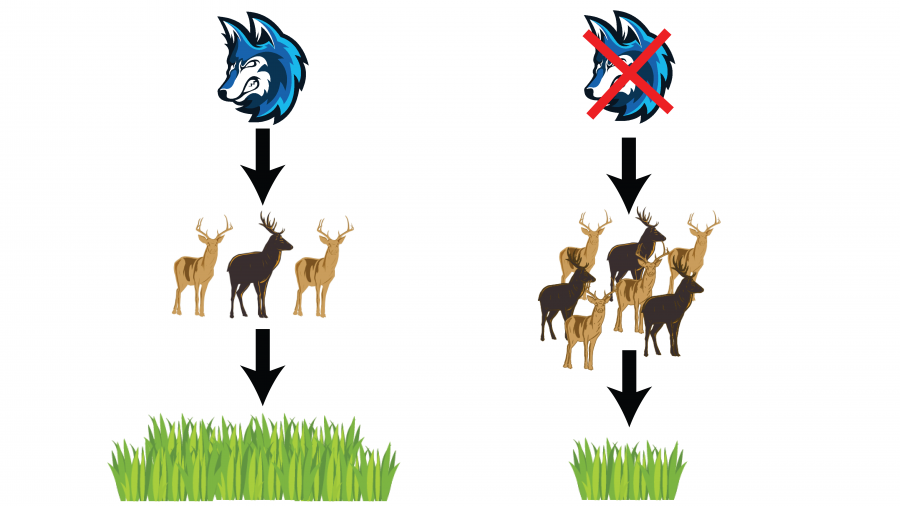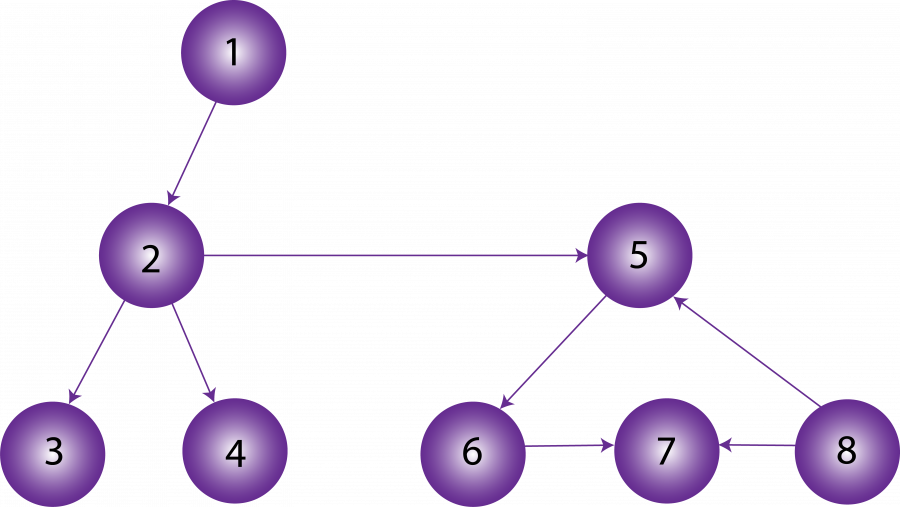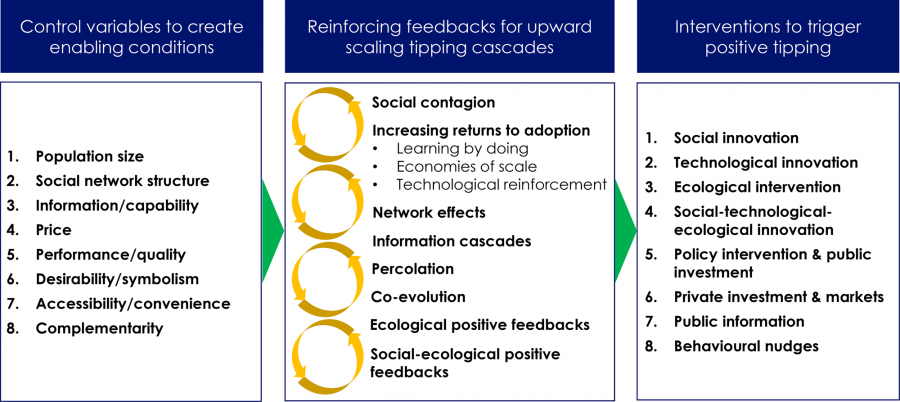
Systems have interdependent entities—species, people, social groups, etc.—and when there are interactions or links among these different parts, it leads to the formation of networks. Cascading effects are one possible consequence of such interdependence. A cascading effect happens when a change in one component influences those that it is linked to, and so on—much like a chain reaction. Cascades occur when interactions (or flows of information) are directional (move in one orientation) and there are sequential changes, usually following some initial perturbation, also called an enabling condition. Cascading effects are very common in ecological systems, such as communities with mutualistic interactions among species, food webs, and parasites with their hosts (Gaiarsa and Guimarães 2019). Ecological cascades can result in entire changes to food webs due to sequential extirpation events—that is when a species is lost from an ecosystem locally—or an invasive species arrives (Kotta et al. 2018). Social events can also enable trophic cascades, when a species’ composition or abundance changes at one level in a food web, leading to a change in the species it eats or that it is eaten by. For example, the introduction of a new fishing technology can result in the over-fishing of a top predator, which then leads to the consequent expansion of their prey (Steneck and Pauly 2019).

Social cascades have important differences from ecological cascades because social systems involve human agency. Agents in social networks have the ability to purposefully make changes, such as adding more agents (nodes), and effects can cascade more rapidly (Winkelman et al. 2022). Examples of social-cascading effects include the sequential spread of norms, opinions, fake news, and the adoption of environmental behaviors. All of these effects can lead to social tipping points, in which small changes in a social system “push” it into a different state because of reinforcing (positive) feedbacks. A clear example is the adoption of the domestication of crops, which led to an agricultural revolution with massive impacts on land use (Bak-Coleman et al. 2021).
Some human actions, including responses to an environmental event, initiate a socio-environmental cascade that has very serious implications. For example, the cascading spread of false information about a natural disaster can delay response time (Yang et al. 2023). Other examples include economic and social upheavals triggered by climate change (Franzke et al. 2022) and cascading environmental hazards that have increasingly severe social consequences (e.g., droughts that lead to fires) (Brito et al. 2022). More positive outcomes include decreases in urban crime and illegal dumping after the creation of urban green spaces (Hunter et al. 2019).
Cascades Occur in Networked Systems
The figure below represents a cascading effect as a directed network (pointing in only one direction). The number and strength of the network’s parts and links, as well as its configuration, determine the extent to which a cascading effect will propagate through a complex system and how much it will impact different parts. The stronger the interactions are in a network, the more likely it is that effects will cascade. Cascading effects are also more likely within clusters (also called modules) of tightly linked nodes (species, individuals) but not between those clusters, i.e., modularity typically limits cascades permeating entire networks. For both of these situations—cascades occurring within clusters and modularity limiting expansion of the cascade—changes in the strength of interactions among nodes can modify the effects. Indeed, the relationships between global network structure (e.g., network size, node diversity, etc.), the type of network (e.g., social vs. predator-prey), the strength of interactions and where those interactions occur are complicated. So, at best, the statements above are highly simplified, and one can find examples of exceptions. Regardless, network science is the best approach for investigating cascades, and the same mathematics and modeling principles that are fundamental to network science apply regardless of the context. (See this video tutorial on the basics of network science.)

Cascades and Tipping Points
Cascades of change are most likely to find momentum through specific enabling conditions that alter the network structure; examples include loss of species, entry of an invasive species, introduction of a new technology, or failure of several banks. As the perturbations ripple through a network sequentially, this cascade can result in major changes to the overall system (a regime or system state change). In fact, even small changes can “nudge” a system into a different state due to reinforcing feedbacks. When one person adopts a behavior or view, if they are influencers (i.e., have strong links to others), they can trigger the whole population to adopt it over time (Lenton et al. 2022). But each individual has a threshold to cross before they will adopt it. Understanding and predicting tipping points in networked systems is very difficult, and it is an active area of research—as is the study of interventions to enable positive tipping points (Figure 3).

For specific examples of cascades from the literature, a 3-part SESYNC lesson covers ecological, social, and socio-environmental cascades.